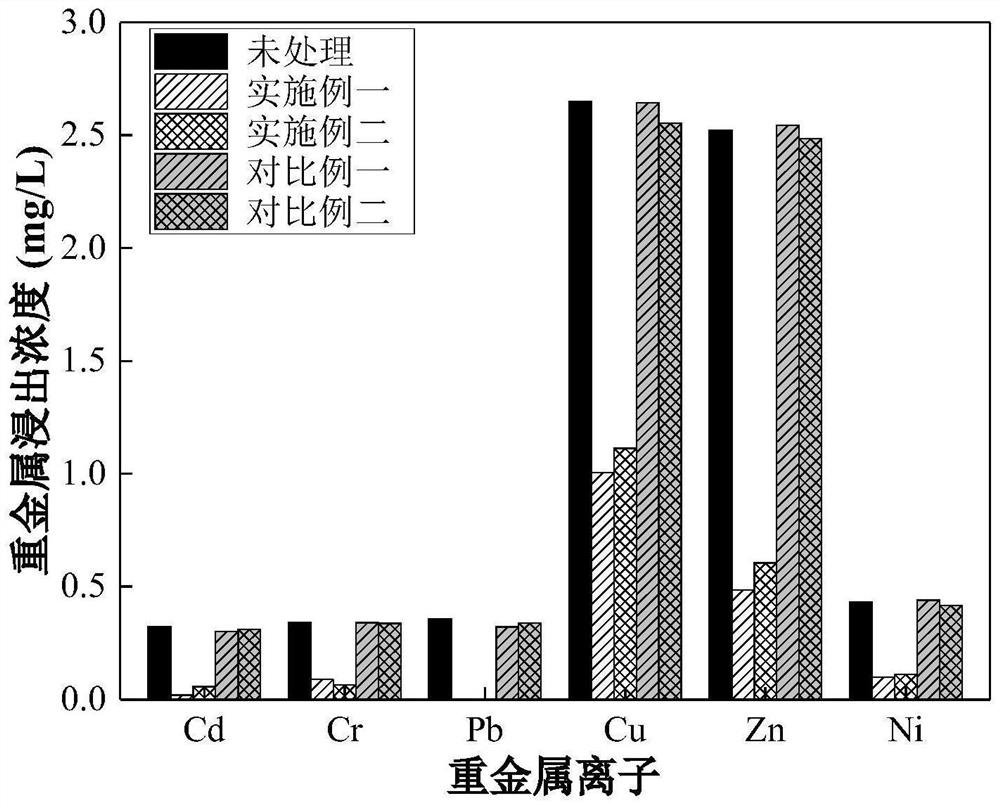Bacterial strain and process for improving humus soil of refuse landfill into greening planting soil
A technology for landfill and humus, applied in planting substrates, soil conditioning materials, applications, etc., can solve the problems of narrow soil range, long treatment cycle, long cycle, etc., to avoid biological hazards and reduce leaching concentration. , the effect of fast growth
- Summary
- Abstract
- Description
- Claims
- Application Information
AI Technical Summary
Problems solved by technology
Method used
Image
Examples
Embodiment 1
[0050] 1. Sampling, heavy metal testing and pretreatment of humus soil
[0051] The test humus was excavated and screened from Woqishan Landfill in Wenzhou City, Zhejiang Province. The humus has been buried for more than 25 years, with a particle size of ≤15mm. It is stable in degradation. Yellow-black. Through relevant tests, the total amount of heavy metals in the humus soil is as follows: Cd is 69.240mg / kg, Cr is 291.252, Pb is 350.640mg / kg, Cu is 375.282mg / kg, Zn is 1489.743mg / kg, Ni is 57.750 mg / kg; the leaching concentration of each heavy metal (<2mm particle size) is: Cd is 0.3240mg / L, Cr is 0.3420mg / L, Pb is 0.3574mg / L, Cu is 2.6480mg / L, Zn is 2.5210mg / L , Ni is 0.4312mg / L. The leaching concentration of heavy metals is much higher than the water quality level IV standard of the "Environmental Quality Standards for Surface Water" (GB 3838-2002), and direct resource utilization will cause secondary pollution.
[0052] The humus soil is pretreated according to the meth...
Embodiment 2
[0068] 1. Sampling, heavy metal testing and pretreatment of humus soil
[0069] The test humus was excavated and screened from Woqishan Landfill in Wenzhou City, Zhejiang Province. The humus has been buried for more than 25 years, with a particle size of ≤15mm. It is stable in degradation. Yellow-black. Through relevant tests, the total amount of heavy metals in the humus soil is as follows: Cd is 69.240mg / kg, Cr is 291.252, Pb is 350.640mg / kg, Cu is 375.282mg / kg, Zn is 1489.743mg / kg, Ni is 57.750 mg / kg; the leaching concentration of each heavy metal (<2mm particle size) is: Cd is 0.3240mg / L, Cr is 0.3420mg / L, Pb is 0.3574mg / L, Cu is 2.6480mg / L, Zn is 2.5210mg / L , Ni is 0.4312mg / L. The leaching concentration of heavy metals is much higher than the water quality level IV standard of the "Environmental Quality Standards for Surface Water" (GB 3838-2002), and direct resource utilization will cause secondary pollution.
[0070] The humus soil is pretreated according to the meth...
PUM
| Property | Measurement | Unit |
|---|---|---|
| particle diameter | aaaaa | aaaaa |
Abstract
Description
Claims
Application Information
 Login to View More
Login to View More - R&D
- Intellectual Property
- Life Sciences
- Materials
- Tech Scout
- Unparalleled Data Quality
- Higher Quality Content
- 60% Fewer Hallucinations
Browse by: Latest US Patents, China's latest patents, Technical Efficacy Thesaurus, Application Domain, Technology Topic, Popular Technical Reports.
© 2025 PatSnap. All rights reserved.Legal|Privacy policy|Modern Slavery Act Transparency Statement|Sitemap|About US| Contact US: help@patsnap.com

